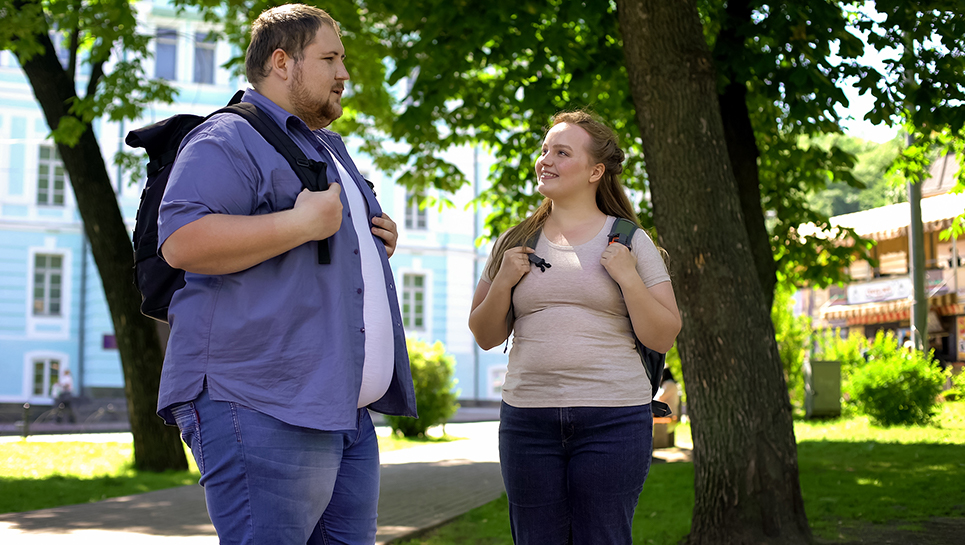Representation in the Classroom

Seeing ourselves represented in our environment helps us to know that we belong here, and this includes the classroom. As teachers, we are encouraged to pay attention to various social positions and identities when selecting course materials and examples, making sure there is a good variety of representation. We are also asked to provide opportunities for students to speak, write or create from their own lived experiences and connect them to course topics – creating relevance.
If students do not see themselves represented, then it is unlikely that they will feel comfortable sharing from their own experience or position. As just one example, in this blog post on the Lines for Life website, Cultural Engagement Coordinator Kennedy Luddington talks about the importance of representation for mental health: Mental Health Requires Representation (February 2022). When we have classroom presentations or discussions focused on weight and use stigmatizing “O words,” we are talking about our larger-bodied students, not with them and not listening to them. Representation impacts students and their learning in profound ways.
Here are some ideas for creating a more weight-inclusive classroom, and a sense of belonging for students in larger bodies:
- Physical space – Take the initiative to make sure your classroom (or meeting room) has seating and space for all sizes – moveable desks and furniture, wide aisles between rows or sections, sturdy chairs. This should be the format for the entire classroom, not just one moveable desk and larger chair off to the side, or in front of all other seating, making the person using it feel hyper-visible. All students should have the opportunity to sit in a place where they feel comfortable and are able to focus on learning. If your classroom is not welcoming to students of all sizes, ask for a change to a different room. There are articles listed below that can be shared to educate people on this issue. This is an equity issue, not just a comfort preference.
- Images in presentations – Include people in a variety of body sizes, avoiding negative stereotype and tropes – use larger people just going about their regular day. You can find some good examples available free at AllGo.
- Language – In both written and spoken word, make adjustments to use less stigmatizing language. These articles go into more detail: More Than Semantics #1; More Than Semantics #2; and, More Than Semantics #3. If you feel that “O-words” are unavoidable, at least acknowledge how they can be harmful and stigmatizing. Provide content warnings for assigned readings or class discussions, and be explicit that students can opt out. This is a trauma-informed approach, especially for those who might be susceptible to triggers for disordered eating.
 Class activities and assignments – The articles on this website in the “Body Liberation Fits in Public Health” series outline topics that can be discussed and that encourage critical thinking about public health values and principles. Additional materials are included with each article that can be used for research and discussion. If weight-centric materials are used in class (such as, an article using weight as a proxy for health), ask students how the information could have been achieved in a more weight-neutral or weight inclusive way. For example, the impacts or success of a fitness program can be measured by a variety of biomarkers and by its sustainability over time, rather than how much weight participants lost.
Class activities and assignments – The articles on this website in the “Body Liberation Fits in Public Health” series outline topics that can be discussed and that encourage critical thinking about public health values and principles. Additional materials are included with each article that can be used for research and discussion. If weight-centric materials are used in class (such as, an article using weight as a proxy for health), ask students how the information could have been achieved in a more weight-neutral or weight inclusive way. For example, the impacts or success of a fitness program can be measured by a variety of biomarkers and by its sustainability over time, rather than how much weight participants lost.
Changing course topics, assignments and activities can take time and is an iterative process for something as comprehensive as moving from weight-centric to weight-inclusive. Keeping that “process” aspect in mind, we can begin to work on changes that get us closer to class experiences of respect and dignity for all students.
If you need additional ideas or resources for making your classroom more weight-inclusive, please reach out via the Contact page.
CURIOUS TO LEARN MORE?
- AllGo. (2019, September 5). The “Hidden Curriculum” Taught by Desks in College Classrooms (Almost) Everywhere. AllGo.
- Brown, H. A. (2018). There’s always stomach on the table and then I gotta write!”: Physical space and learning in fat college women. Fat Studies, 7(1), 11–20.